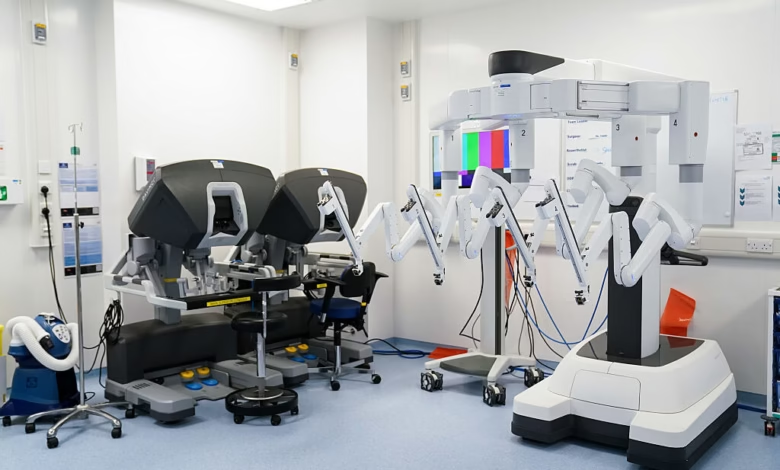AI-Powered Surgical Robot Performs Groundbreaking Operation

▼ Summary
– Intuitive Surgical introduced DaVinci surgical robots in the late 1990s, enabling remote surgeries via robotic arms and video feeds.
– John Hopkins researchers developed an AI-driven DaVinci robot capable of performing a gallbladder-removal surgery autonomously.
– Previous autonomous surgical robots like STAR relied on pre-programmed actions and marked tissues but could adjust plans based on camera feeds.
– The new system, SRT-H, uses transformer models (similar to ChatGPT) for flexible task planning and execution, learning from demonstrations.
– SRT-H leverages the widely adopted DaVinci robot hardware and improves on STAR by eliminating the need for marked tissues or rigid plans.
Johns Hopkins University has achieved a major breakthrough in robotic surgery by developing an AI system capable of autonomously performing complex procedures. Researchers successfully adapted a DaVinci surgical robot to remove a gallbladder using artificial intelligence, marking a significant step toward fully autonomous operations in medicine.
The DaVinci robotic system, first introduced by Intuitive Surgical in the late 1990s, revolutionized minimally invasive surgery by allowing surgeons to operate remotely with precision-controlled robotic arms. Now, scientists have taken this technology further by integrating advanced AI models similar to those behind ChatGPT, enabling the robot to perform surgeries with minimal human oversight.
Previous attempts at autonomous robotic surgery relied on rigid, pre-programmed movements, akin to industrial robots assembling cars. Ji Woong Kim, a lead researcher on the project, explains that earlier systems like STAR (Smart Tissue Autonomous Robot) required marked tissues and fixed surgical plans. While STAR could adjust its actions based on real-time camera feedback, it lacked the adaptability of human surgeons.
The latest innovation, called SRT-H (Surgical Robot Transformer), represents a major leap forward. Unlike its predecessors, this system learns from surgical demonstrations rather than following static instructions. The team modified a standard DaVinci robot, already widely used in hospitals, and equipped it with two transformer-based AI models. One handles high-level decision-making, ensuring the procedure stays on track, while the other translates those decisions into precise robotic movements.
Axel Krieger, a mechanical engineering professor involved in the research, emphasizes that this approach allows for greater flexibility and real-time adaptation, crucial for handling the unpredictable nature of live surgeries. With over 10,000 DaVinci systems already in use globally, integrating AI could significantly enhance surgical precision and accessibility, potentially reducing reliance on human expertise in routine operations.
While fully autonomous surgery remains in development, this advancement demonstrates the potential for AI to transform medical robotics. The ability to learn from expert surgeons and adjust in real-time could pave the way for safer, more efficient procedures in the near future.
(Source: Ars Technica)
